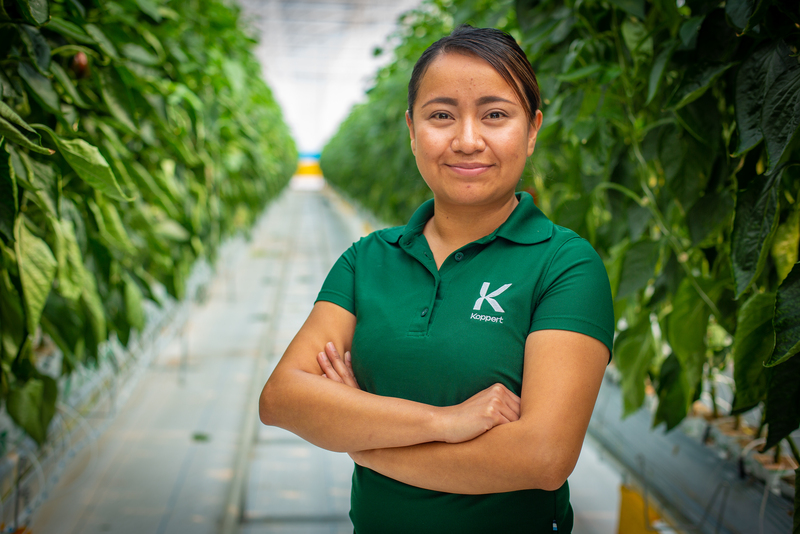
There are many reasons to implement Integrated Pest Management (IPM), from a desire to grow more sustainably to an urgent need to find alternatives to conventional pesticides. IPM combines different strategies to add value to your business, with biological solutions as a key success factor.
‘At its core, IPM helps growers create an environment that is favourable for plant development and unfavourable for pests and diseases,’ says Felipe de Mendonça, Market Development Manager at Koppert. 'It is a comprehensive strategy for promoting a healthy crop and healthy soil conditions, and for utilising genetic variety to optimise crop development, pest tolerance and yield.’
Biology as the foundation
That strategy is centred around biology. Felipe: 'Let's take Mycotal, a fungus and bio-insecticide, as an example. After it kills the pest, it produces more spores, which then go on to kill more pests. Elsewhere in the crop, good mites reproduce and eat bad mites. And in the meantime, the biofungicide Trianum controls pathogens in the soil and actively stimulate plant growth. All these solutions are completely natural and effective.’
In addition, an effective IPM strategy incorporates pest monitoring, cultural practices and preventative measures, as well as conventional plant protection products. 'Growers who begin by optimising the use of biological solutions, by applying the right products in the right way and at the right time, may become less dependent on conventional interventions,’ explains Felipe. ‘Depending on the crop and the target, chemical solutions may not be necessary at all.'
Main drivers of IPM
The need to manage pesticide and insecticide resistance is one of the main drivers of IPM adoption. By following best practices for the use of chemical solutions, IPM helps to slow down or even avoid resistance, so that important products remain effective over time.
Adopting IPM is also becoming more urgent, explains Guido Roozemond, Product Manager at Koppert. 'New rules restrict or even ban the use of many chemical pesticides and insecticides. On top of that, governments as well as retailers are setting strict rules for residue levels, particularly on fruits. As a result, there is an absolute need to work with biological solutions.’
Status quo as the starting point
The status quo is the starting point for developing an IPM strategy. ‘We conduct an assessment of the growers’ current practices: Which products are they using and how often? Using what type of equipment?’ explains Guido. 'And we zoom in on the need: Is it a must to prevent any and all damage to the crop because the customer demands a perfect fruit? Or can the plant handle some level of damage and is the goal not to eliminate but reduce pests? Afterall, you don't want to spray more than is necessary.’
The next step is to introduce biological solutions, as an addition or replacement. Felipe: 'We determine what products can be replaced with biologicals, and if they are compatible with the soil conditions, climate conditions and with other products used in the field. In everything we do, we involve the grower and the distributor. Leveraging our collective knowledge – of biology, of the business and of the market – is so important. Because in the end, we want to work with and for growers to develop a system that is easily integrated into their current way of working, provides optimal protection for the crop, and maximises yield and profitability.’
Return on investment
Growers who adopt Koppert's biological solutions can trust that each product has been thoroughly tested in controlled and real-world environments. But beyond that, they need to trust that their IPM strategy is commercially viable. Guido: 'We don't just arrive on the grower's doorstep with 20 new solutions to replace what they already have. We introduce a solution, we monitor the results, we demonstrate that it adds value. From there, we continue to develop the system.’
Showing the return on investment is key, adds Felipe. 'We start with just a few hectares, so that we can compare the results of our product to that of the grower's current solutions. We monitor the yields, collect harvest data, and calculate the ROI. Because in the end, every investment should add value.’
Support
The data shows that IPM can be used successfully in outdoor and protected crops, and that IPM has economic benefits. The successful implementation of IPM requires good biologicals and, adds Felipe, support. ‘Surround yourself with professionals. They can provide expert advice to help establish a system that is both profitable and easy to use.’